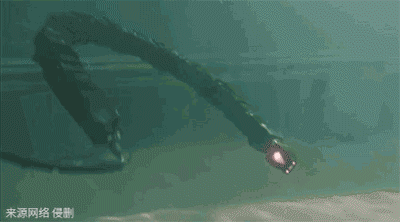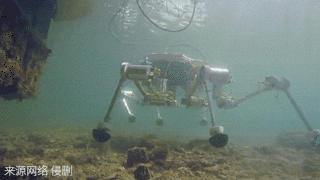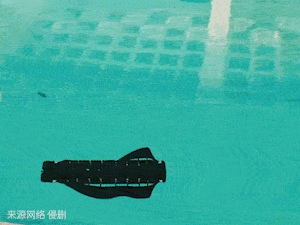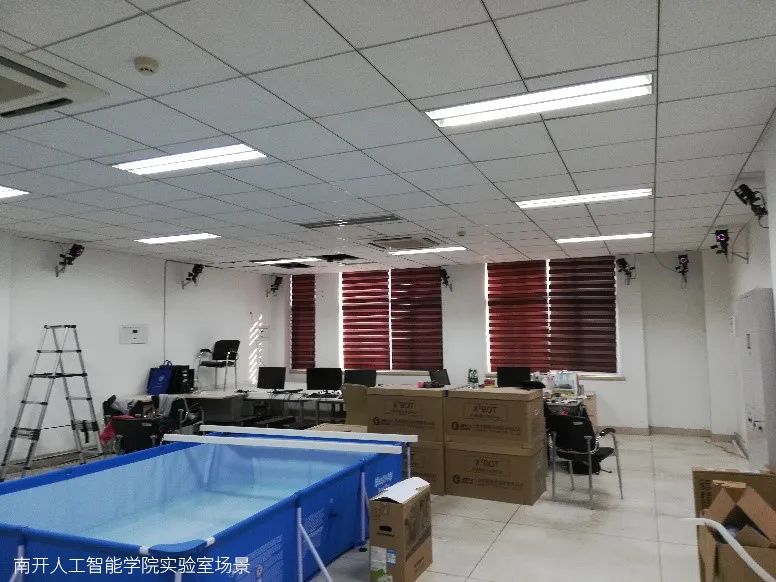As a high-precision positioning measurement system, optical motion capture systems are applied not only to ships, marine structures, and fisheries but also to various studies concerning underwater robots.
Diverse Application Scenarios for Underwater Robots
Motion capture systems are extensively used for underwater robot development and validation, capturing the robot's location information and motion posture. For multi-underwater robot collaborative control, these systems can serve as indoor laboratory positioning solutions, providing positional information of the robot itself and other robots.
1) Algorithm validation for underwater bionic serpentine robots
Due to the characteristics of serpentine robots, which include multiple joints and superfluous degrees of freedom, as well as the highly complex and nonlinear physical properties of aqueous environments, observing the robot's movement in experiments, acquiring motion parameters, and optimizing the robot's control strategies through experiments pose certain challenges. By adopting a 3D motion capture system, the underwater serpentine robot's movements and joint postures can be precisely captured. Comparing these with joint postures derived from joint sensor data validates the accuracy of sensor data fusion and posture estimation algorithms.

2) Teleoperated underwater robot equipped with a mechanical arm
When developing a mechanical arm for a small remote-controlled underwater robot (ROV), it is important to consider the impact of the arm's posture (vertical, lateral) in different motion states (forward, sideways) on the ROV's own posture, and whether the robot can maintain stability. An underwater motion capture system captures the data by tracking markers fixed on the ROV, calculating its roll, pitch, and yaw data with higher precision than most inertial sensors.

3) Underwater Multilegged Robot Gait Analysis
An underwater hexapod robot can explore the dark and murky sea floor by repeatedly pushing its feet without the need for cameras or lasers. This capability makes it suitable for deep-sea mining and collecting plastic waste from the seabed, presenting significant development prospects. During the robot's development phase, a 3D motion capture system is used to obtain the robot's dynamic parameters in real-time, facilitating online analysis and gait planning. The planned gaits are then transmitted to the robot's control system, which drives the robot's movement through servo motors and corrects its posture in real-time.

4) Motion capture of bionic undulating fin robot fish
The bionic undulating fin robotic fish uses silicone fins on both sides with servo assistance for undulating propulsion. This method avoids harming marine life, as might happen with high-speed rotating propellers. Moreover, the large surface area of the undulating fins can be used to build an energy generation system that harnesses water flow to charge the robot fish. In the experimental phase, a motion capture system can capture the markers placed on the fins and body of the bionic undulating fin robotic fish to obtain kinematic parameters. This data is used to analyze the effects of swing amplitude, swing frequency, and water flow velocity on the hydrodynamic performance of the robot.

5) Formation Movement of Underwater Vehicles
The simultaneous observation and data acquisition at different points by a formation of multiple Autonomous Underwater Vehicles (AUVs) can greatly enhance the accuracy of ocean environmental models. A critical aspect of research in underwater robotic swarm systems is the coordination and collaboration among the individual robots within the group. The collaborative control of an underwater robot formation is primarily manifested in the holistic formation and trajectory planning of multiple underwater robots. This requires the robots to complete marine tasks according to predefined formation patterns and trajectories. Cooperative control necessitates a high-precision navigation and positioning system to acquire position information of itself and other vehicles. During model experiments in a laboratory environment, a motion capture system can serve as an underwater positioning system, providing high-precision position information for multiple rigid bodies, which is used for formation motion planning research.

NOKOV motion capture systems are applied for high-precision positioning of bionic robotic fish
In the significant application domain of underwater robotics, NOKOV Motion Capture deeply collaborates with the Artificial Intelligence College of Nankai University, providing high-precision positioning data for its related research.
Nankai University's School of Artificial Intelligence research on the collective behavior of multiple bionic fish
NOKOV’s engineering technicians set up 16 Mars 2H motion capture cameras in a 15-meter by 5-meter space. The capture area included a small pool, a desk area for a miniature unmanned vehicle (E-puck), and a ground area for the Intelligent Jia mobile robot. Reflective markers were placed on each biomimetic robotic fish in different arrangements to differentiate the individual IDs of the robotic fish. By capturing the reflective markers on the robotic fish, the system obtained the 3D coordinates of the markers and broadcasted them in real-time using an SDK. A single robot could receive positional information about itself and nearby mobile robots with sub-millimeter precision.

Research on various types and applications of underwater robots has always been an important direction in the field of scientific research. NOKOV motion capture will continue to expand its application scope in underwater scenarios, providing high-precision motion capture data for more related research.